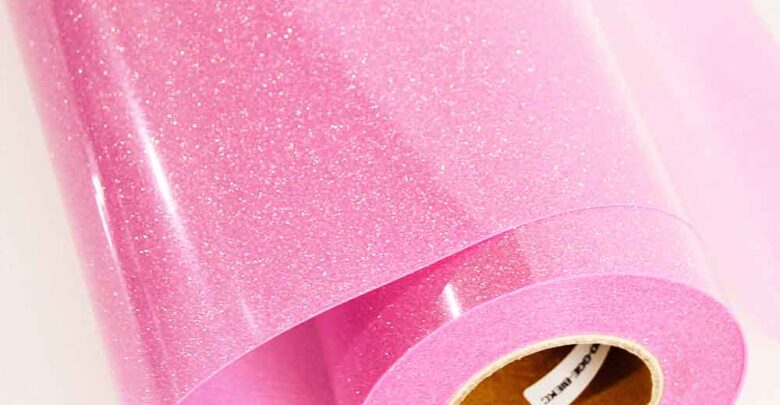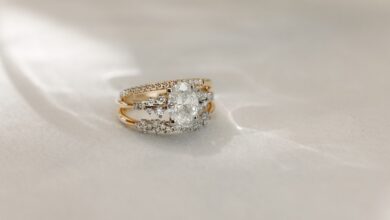Glitter Heat Transfer Vinyl – The Types, Usage And Durability

Heat transfer vinyl is often termed HTV, and it is a special form of vinyl polymer used on some materials and fabrics. The main goal is to create designs along with some of the promotional items. You can avail of this product, like the glitter heat transfer vinyl, in sheet or roll forms with high-end adhesive backing. So, it becomes a lot easier for you to cut, weeded and then place it on the substrate for ultimate heat application.
Most of the time, the HTV is made in single colours. But, if you search thoroughly, you might come across some of the special options like flocked, glitter, patterned, glow in the dark, holographic, 3D puff and even reflective ones. So, make sure to understand the use of heat transfer vinyl for diverse products before you can actually aim for the right one in here. The more you research, the better features you will come to learn about.
Going in with the types of the HTV:
HTV or heat transfer vinyl is available in single colours and in some of the full coloured patterns as well. You can get it in a printable version, which can be used with a solvent printer and solvent ink. It is widely used for simple designs with minimalistic colours, as every individual colour or pattern used in design needs to be weeded, cut, and heat pressed.
- There is some heat transfer vinyl, which can be layered for forming multi-coloured designs. If you get to involve some more layers, it becomes harder to match up each one for procuring the best results.
- The heat transfer vinyl cannot be used that easily for covering full coloured pictures or anything with some gradients. There you have some other applications for the said options too.
- Now, you can use the power of the heat transfer vinyl for creating some special effects. That’s why you can see the wide use of glitter heat transfer vinyl these days.
- Not only that, but you can get hands-on the 3D puff, holographic, flocked, glow in the dark and some other options as well. The layering associated with such vinyl is highly dependent on the vinyl type used.
- If you want, you can procure the heat transfer vinyl anywhere from the smaller sheets to the larger master rolls. It can be anywhere around 60 inches x 50 yards.
- Some of the typical sizes that most of the manufacturing units have in store are 15 inches and 19 inches wide rolls in 5 yards, 10 yards, 1 yard, 25 yards and finally in 50-yard lengths.
Get to the usage of it now:
It is not that hard to state that the heat transfer vinyl is placed on textile items traditionally. Mainly because of the nature in which this vinyl is applied, it can be used on items that will take the pressure and heat needed for making the transfer adhere well.
- For the clothing and the fabric section, the typical temperature will range from 250 to 300 degrees F or 120 to 120 degrees C.
- The product, which can also be stated as substrate, must hold up under that given pressure and clamping action of the said heat press.
- Each manufacturer of the heat transfer vinyl will list down the items, which must be used for every vinyl form.
- Some of the fabrics like cotton or polyester blends, cotton, canvas and polyester will work well with that of the heat transfer vinyl.
- You can use these vinyl options with leather and nylon. But, some of the other items like plastics and paper will not work well as they cannot take that heat needed for adhering vinyl to the surface area.
It is always important for you to ensure that the proper vinyl tape is widely used with the proper substrate. Once you are able to find that mix, it becomes a lot easier to go for the best HTV usage.
Going in with the equipment:
Much like gaining knowledge on the paper, it is vital to focus on the equipment to go with the glitter heat transfer vinyl as well. The equipment that you need to work well with the HTV papers will be a vinyl cutter and designing software.
- Desktop cutters are mostly suitable for lower volume and budget. Then you have the standalone cutters noted for that higher volume.
- Then you have the cut printers or the print, which can be made available and have the power to cover up the printed vinyl well.
- Experts will use the power of the weeding tools for removing the HTV, which will not be pressed onto the product from adhesive carrier sheets.
- Sometimes, the iron or heat press is used for transferring vinyl right onto the main substrate or platform.
- Nowadays, heat presses have the best ability to set one specified pressure level and temperature for matching the targeted vinyl. It is highly recommended for professional use only.
Durability at its best:
The heat transfer vinyl must last the product’s lifetime if it is well attached to the substrate, as per the instruction of the manufacturer. So, it is highly recommended to go through the instruction manual well before you can head for the best results with the vinyl papers now.
Check-in with the best companies:
Whether you are looking for the raw HTV paper or the final result, it is mandatory to catch up with the best firm to do the same. You won’t be able to work on glitter heat transfer vinyl on your own unless you are well-trained for the same.
While looking for the companies, don’t forget to check their working capabilities. For how many years have they been working in this sector? Get proper results before making the next moves. For the next stop, you need to check on the types of HTV papers waiting for you to grab. Once you have the right results handy, you can move to work with the same firm now.




